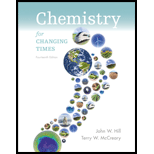
Concept explainers
(a)
Interpretation: The current rate of population growth, as percentage per year of France should be estimated.
Concept Introduction:
As per records, about 8000 B.C., the world population is approximately 5 million. It grew up to 200 million from 8000 year to 1 A.D, with growth rate 0.05% per year.
This change is due to industrial revolution. During the 20th century, the population of world increases from 1.65 to 6 billion. In 1970, the population was half of the current population.
The annual percentage growth rate is calculated by dividing percent growth by number of years.
(b)
Interpretation: The current rate of population growth, as percentage per year of Bolivia should be estimated.
Concept Introduction:
As per records, about 8000 B.C., the world population is approximately 5 million. It grew up to 200 million from 8000 year to 1 A.D, with growth rate 0.05% per year.
This change is due to industrial revolution. During the 20th century, the population of world increases from 1.65 to 6 billion. In 1970, the population was half of the current population.
The annual percentage growth rate is calculated by dividing percent growth by number of years.
(c)
Interpretation: The current rate of population growth, as percentage per year of Uganda should be estimated.
Concept Introduction:
As per records, about 8000 B.C., the world population is approximately 5 million. It grew up to 200 million from 8000 year to 1 A.D, with growth rate 0.05% per year.
This change is due to industrial revolution. During the 20th century, the population of world increases from 1.65 to 6 billion. In 1970, the population was half of the current population.
The annual percentage growth rate is calculated by dividing percent growth by number of years.
(d)
Interpretation: The current rate of population growth, as percentage per year of United States should be estimated.
Concept Introduction:
As per records, about 8000 B.C., the world population is approximately 5 million. It grew up to 200 million from 8000 year to 1 A.D, with growth rate 0.05% per year.
This change is due to industrial revolution. During the 20th century, the population of world increases from 1.65 to 6 billion. In 1970, the population was half of the current population.
The annual percentage growth rate is calculated by dividing percent growth by number of years.
(e)
Interpretation: The current rate of population growth, as percentage per year of World should be estimated.
Concept Introduction:
As per records, about 8000 B.C., the world population is approximately 5 million. It grew up to 200 million from 8000 year to 1 A.D, with growth rate 0.05% per year.
This change is due to industrial revolution. During the 20th century, the population of world increases from 1.65 to 6 billion. In 1970, the population was half of the current population.
The annual percentage growth rate is calculated by dividing percent growth by number of years.
Want to see the full answer?
Check out a sample textbook solution
Chapter 12 Solutions
Chemistry for Changing Times
- > You are trying to decide if there is a single reagent you can add that will make the following synthesis possible without any other major side products: 1. ☑ CI 2. H3O+ O Draw the missing reagent X you think will make this synthesis work in the drawing area below. If there is no reagent that will make your desired product in good yield or without complications, just check the box under the drawing area and leave it blank. Click and drag to start drawing a structure. Explanation Check ? DO 18 Ar B © 2025 McGraw Hill LLC. All Rights Reserved. Terms of Use | Privacy Center | Accessibilityarrow_forwardDon't use ai to answer I will report you answerarrow_forwardConsider a solution of 0.00304 moles of 4-nitrobenzoic acid (pKa = 3.442) dissolved in 25 mL water and titrated with 0.0991 M NaOH. Calculate the pH at the equivalence pointarrow_forward
- What is the name of the following compound? SiMe3arrow_forwardK Draw the starting structure that would lead to the major product shown under the provided conditions. Drawing 1. NaNH2 2. PhCH2Br 4 57°F Sunny Q Searcharrow_forward7 Draw the starting alkyl bromide that would produce this alkyne under these conditions. F Drawing 1. NaNH2, A 2. H3O+ £ 4 Temps to rise Tomorrow Q Search H2arrow_forward
 ChemistryChemistryISBN:9781305957404Author:Steven S. Zumdahl, Susan A. Zumdahl, Donald J. DeCostePublisher:Cengage Learning
ChemistryChemistryISBN:9781305957404Author:Steven S. Zumdahl, Susan A. Zumdahl, Donald J. DeCostePublisher:Cengage Learning ChemistryChemistryISBN:9781259911156Author:Raymond Chang Dr., Jason Overby ProfessorPublisher:McGraw-Hill Education
ChemistryChemistryISBN:9781259911156Author:Raymond Chang Dr., Jason Overby ProfessorPublisher:McGraw-Hill Education Principles of Instrumental AnalysisChemistryISBN:9781305577213Author:Douglas A. Skoog, F. James Holler, Stanley R. CrouchPublisher:Cengage Learning
Principles of Instrumental AnalysisChemistryISBN:9781305577213Author:Douglas A. Skoog, F. James Holler, Stanley R. CrouchPublisher:Cengage Learning Organic ChemistryChemistryISBN:9780078021558Author:Janice Gorzynski Smith Dr.Publisher:McGraw-Hill Education
Organic ChemistryChemistryISBN:9780078021558Author:Janice Gorzynski Smith Dr.Publisher:McGraw-Hill Education Chemistry: Principles and ReactionsChemistryISBN:9781305079373Author:William L. Masterton, Cecile N. HurleyPublisher:Cengage Learning
Chemistry: Principles and ReactionsChemistryISBN:9781305079373Author:William L. Masterton, Cecile N. HurleyPublisher:Cengage Learning Elementary Principles of Chemical Processes, Bind...ChemistryISBN:9781118431221Author:Richard M. Felder, Ronald W. Rousseau, Lisa G. BullardPublisher:WILEY
Elementary Principles of Chemical Processes, Bind...ChemistryISBN:9781118431221Author:Richard M. Felder, Ronald W. Rousseau, Lisa G. BullardPublisher:WILEY





